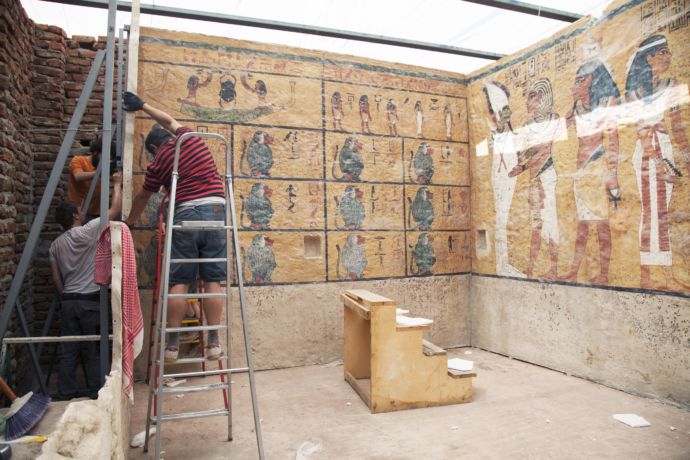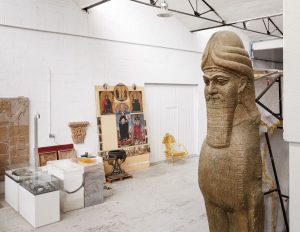Late last year, The New Yorker ran a lengthy piece on Factum Arte, a company headed by former painter Adam Lowe, specializing in recreating ancient, irreplaceable art in the minutest detail. One of his grandest efforts is a recreation of the tomb of Tut-ankh-amun installed in the Valley of The Kings to allow visitors to contemplate the tomb paintings at length — in the actual tomb, tourists are limited to 10/15 minutes in order to curb the deterioration caused by their perspiration and breathing. Another project was recreating “The Wedding at Cana,” a fresco stolen from a refectory in Venice by Napoleon Bonaparte and exhibited in the Louvre. The recreation was installed in the empty space left in the refectory since the theft. The article discusses the processes used in these recreations:
“The facsimile had been made by digitally recording the tomb, in 2009, with a fleet of scanners, for seven weeks. Nut and her companions were immortalized at actual size, and at a resolution of up to eight hundred dots per inch. After the data sets from the scans were stitched together on a computer screen, the quilt of 0s and 1s was returned to physical form. The process eerily echoed that of making a fresco. First came the walls. A recording of their topography, capturing every bulbous paint drip, was rendered in 3-D by a computer-numerical-control milling machine, which produced two hundred and forty panels of high-density polyurethane. The panels, which mimicked the uneven surface of the original walls, were fitted together. The ersatz walls were then wrapped with a flexible ‘skin,’ of a gesso-like material, bearing a lush ink-jet printout of the frescoes.”
One interesting feature of the facsimile tomb is that Factum Arte reconstructed the artwork on a wall that had been destroyed when Howard Carter originally punched a way into the sealed tomb. ALSO, the fine detail of the data collected in the scanning process provides scientists with information on the art and objects being scanned of laboratory quality. In fact, one archaeologist reviewing the data using various criteria noticed straight ridges in the tomb wall that had never been recorded before and that apparently are doorways into a different area of the mortuary complex that had been sealed and painted over when the chamber was being prepared for Tut-ankh-amun’s interment.
Read the entire article here
http://www.newyorker.com/magazine/2016/11/28/the-factory-of-fakes
And you can visit Factum Arte’s site and check out virtual tours of some of their efforts from the comfort of your office cubicle while you avoid working.


